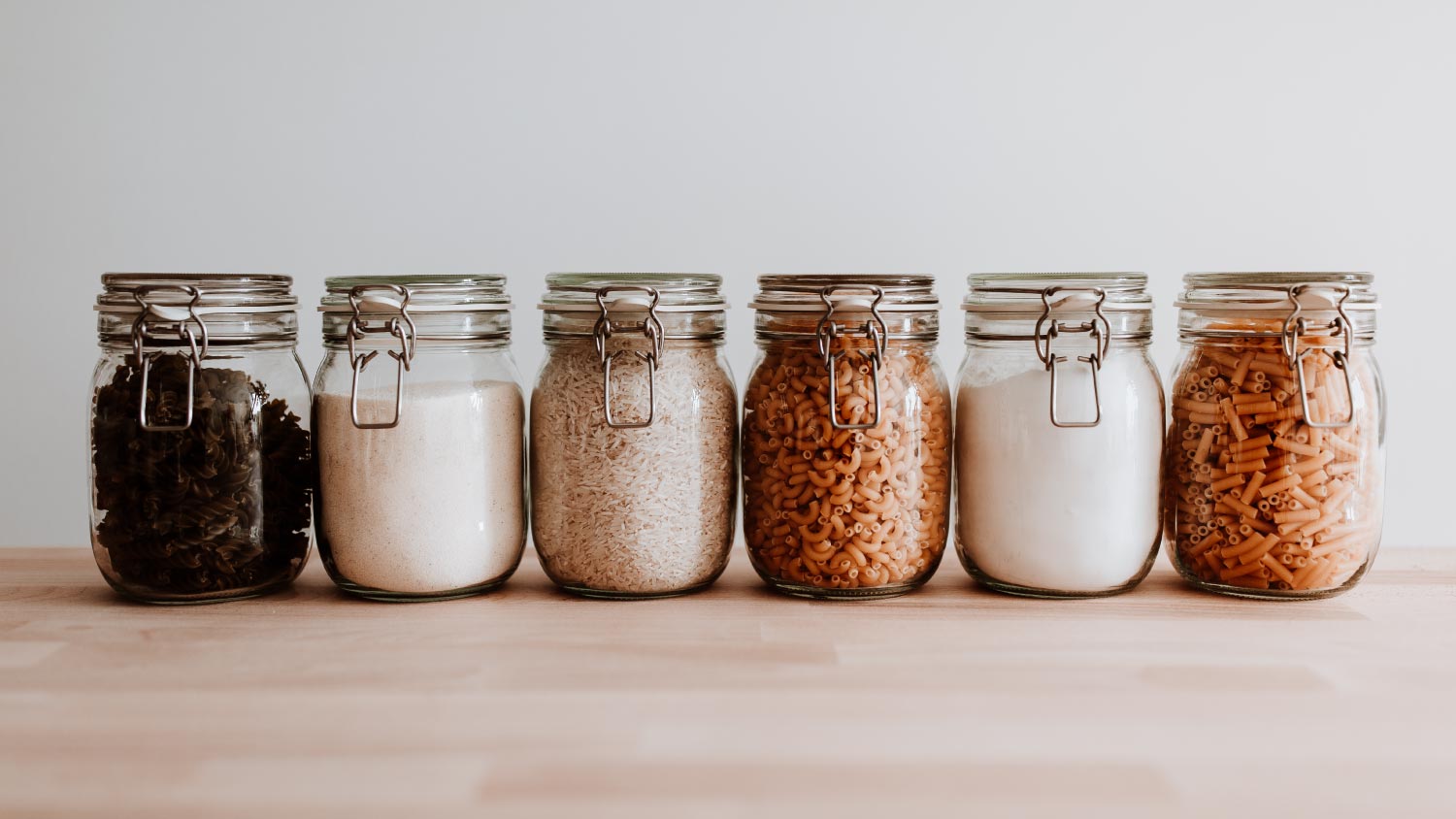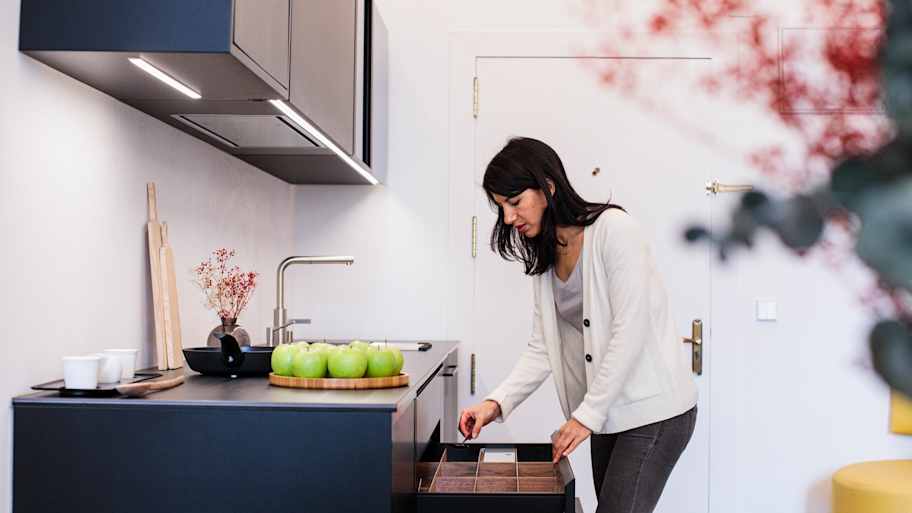
Discover the average professional organizer cost, what influences pricing, and how to budget for your next home organization project.
Good ways to store your goods


Your family seems to go through bags of potato chips, jars of peanut butter, and scoops of trail mix like it’s no tomorrow. So, it’s wise to head to the warehouse store regularly to save time and money on groceries. The only problem? Your home has become cluttered with packages of food waiting for your family to crack them open.
To organize your purchases and tidy up your space, read on for some helpful strategies for storing bulk foods and other items.
The easiest way to reduce clutter is to bring home fewer items. Before heading to the store, make a shopping list and stick to it. If you need a certain product but the only size available is a mammoth container you know will go stale, don’t add it to your cart.
To improve your shopping process so you don’t overbuy, keep track of how much you use per week or month. If you want to try a new snack, buy it in a small container first before committing to a big box.
Sort through your existing items and throw out any spoiled or expired food. Donate food that’s still fresh but that you don’t plan to use. The same goes for everything in your home: Don’t commit to that huge detergent container if you have a few half-empty bottles you need to condense already.
If you’re overwhelmed or have trouble parting with things, hire a local home organizer to help you pare down your collection and keep you accountable.

Pour dried goods, such as quinoa and lentils, into airtight packaging, which will help protect it from common home pests. Plus, taking items out of their original bags often saves space. Try lidded jars or food storage containers and a wooden chest for teabags.
When choosing a place to store bulk food items, avoid water pipes, vents, windows, and cabinets right above the stove. After all, water, light, and heat can degrade food, especially oils, nuts, and spices. Instead, seek out a dry, well-ventilated, relatively dark spot, such as a storage room.
To protect your food from getting freezer burn or drying out, suck the air and moisture out of bags before sealing them shut. As a bonus, vacuum-sealed food packages are more compact, taking up less room in your freezer.
Store fruits and vegetables that you don’t need to refrigerate in bins with holes, hanging baskets, or on wire racks. Refrigerate more delicate produce, like berries, grapes, and greens.
When you get home from the store, place grains (like flour) in the freezer for at least 48 hours. This step will kill pests. Then, either keep bags in the freezer or move them to the fridge.
Store nuts in the fridge or freezer to prolong their freshness. They'll go rancid more quickly if you keep them at room temperature.
Place any meat you’re not going to use within three days in the freezer. Use freezer-safe bags and label them clearly. If you’re short on freezer space, consider investing in a chest freezer for your garage or basement.
Buy a label maker. Then clearly mark all items, including their date of purchase. This way, you can use older food items before newer ones.
To make your pantry worthy of an Instagram post, store all food in the same type of containers, such as large glass jars with lids. Or choose different sizes of containers from the same brand or baskets and bins in the same neutral color, like white or tan. When possible, use clear vessels, so you’ll immediately know what’s inside.
Devote more accessible areas to items you use more frequently, like canned tomatoes and baking powder. Store foods you reach for less often, like molasses or flavored balsamic vinegar, in a more remote place, such as the highest shelves in your pantry. Place these less-needed items in bins with handles and stock a ladder or step stool in your pantry so you can reach them.
Consider mounting a blackboard or whiteboard in your pantry and keeping track of items you’ll need to replenish soon. That way, when you’re about to leave for the store, you won’t blank on what to buy.
Maximize your space by relying on a baker’s rack, lazy Susan, pull-out drawers, hooks, and hanging baskets to store your items. Bonus points if you organize them by type, such as a basket of baking ingredients or a bin of living room cleaning supplies.

Use shelf organizers to sort frozen fruits and veggies, pre-assembled meals, meats, smoothie fixings, and more in your freezer. And once you have a system in place, do your best to avoid just haphazardly tossing that bag of frozen blueberries in there.
Make your pantry an inviting spot. Line its shelves with contact paper. Then hire a local painter to perk up your walls with a new hue or apply fun stick-on wallpaper yourself. The more you want to hang out in your space, the more you’ll want to use what’s there.
From average costs to expert advice, get all the answers you need to get your job done.

Discover the average professional organizer cost, what influences pricing, and how to budget for your next home organization project.

These kitchen drawer organization tips will reduce time spent rifling through the kitchen looking for what you need. Learn how to organize your kitchen.

If your home is a bit messy, that’s perfectly normal. Trusting a professional home organizer to revamp your space can be worth the cost. Here’s how to find and hire a professional organizer.

Discover small closet organization tips to maximize space, reduce clutter, and create a stylish, functional storage area that suits your needs.

When was the last time you cleaned out your spice rack or linen closet? Our list of 12 things to get rid of in just one hour helps you toss what is old, expired, or no longer needed. Decluttering is faster and easier than you might think.

Maximize space and reduce clutter with these smart laundry room organization tips that boost function and even your home’s resale appeal.